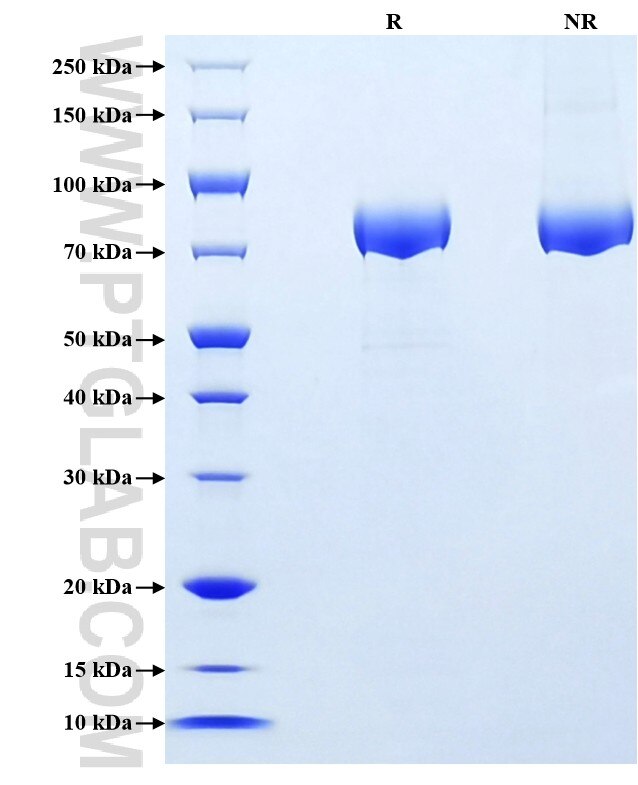Recombinant Human N-Cadherin protein (His Tag)
Species
Human
Purity
>90 %, SDS-PAGE
Tag
His Tag
Activity
not tested
Cat no : Eg0701
Validation Data Gallery
Product Information
| Purity | >90 %, SDS-PAGE |
| Endotoxin | <0.1 EU/μg protein, LAL method |
| Activity |
Not tested |
| Expression | HEK293-derived Human N-Cadherin protein Asp160-Ala724 (Accession# P19022-1) with a His tag at the C-terminus. |
| GeneID | 1000 |
| Accession | P19022-1 |
| PredictedSize | 62.9 kDa |
| SDS-PAGE | 70-90 kDa, reducing (R) conditions |
| Formulation | Lyophilized from 0.22 μm filtered solution in PBS, pH 7.4. Normally 5% trehalose and 5% mannitol are added as protectants before lyophilization. |
| Reconstitution | Briefly centrifuge the tube before opening. Reconstitute at 0.1-0.5 mg/mL in sterile water. |
| Storage Conditions |
It is recommended that the protein be aliquoted for optimal storage. Avoid repeated freeze-thaw cycles.
|
| Shipping | The product is shipped at ambient temperature. Upon receipt, store it immediately at the recommended temperature. |
Background
Cadherins are a family of transmembrane glycoproteins that mediate calcium-dependent cell-cell adhesion and play an important role in the maintenance of normal tissue architecture. N-cadherin (neural cadherin), also known as CDH2 (cadherin 2), is a 130-kDa transmembrane protein and a classical member of the cadherin superfamily which also include E-, P-, R-, and B-cadherins. Expression of N-cadherin has been reported on various cell types including neurons, endothelial cells and cardiac myocytes. N-cadherin has functions in early brain morphogenesis, synaptogenesis and synaptic plasticity. Soluble N-cadherin (sN-CAD) is found in biological fluids, including serum, seminal fluid samples, and urine. It has been shown that significantly higher amounts of serum sN-CAD are present in cancer patients than in persons with no evidence of disease.
References:
1. Navarro, P et al. (1998) J Cell Biol.140(6):1475-1484. 2. Derycke, Lara et al. (2006) Int J Cancer.119(12):2895-2900. 3. Moya, Pablo R et al. (2013) Eur J Hum Genet.21(8):850-854.
